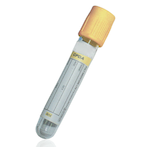
- Home
- Clinical Chemistry Tests
- Prolactin
Prolactin
Specimen Volume
1 ml whole blood minimumSample Preparation
Centrifuge
Turnaround Time
24 hours (longer if further screening required)Sample Processing In Laboratory
Usual
Sample Stability
14 days at 4°CGeneral Information
Prolactin is synthesised in the anterior pituitary and secreted in episodes. The target organ for prolactin is the mammary gland, promoting development and differentiation. Prolactin levels are regulated by dopamine. High concentrations of prolactin have an inhibiting action on steroidogenesis of the ovaries and on hypophyseal gonadotrophin production and secretion. In pregnancy the concentration of prolactin rises under the influence of elevated oestrogen and progesterone. Post partum, the stimulating action of prolactin on the mammary gland leads to lactation. Hyperprolactinaemia (in men and women) is a major cause of fertility disorders.
Hyperprolactineamia can also be caused by some drugs, as shown in the table below (source: La torre and Falorni (2007). Pharmacological causes of hyperprolactinemia. Therapeutics and Clinical Risk Management, 3(5), 929-951). Additionally, stress can cause a moderate increase in prolactin levels.
| Antipsychotics | Typical | Haloperidol Chlorpromazine, Thioridazine, Thiothixene |
| Atypical | Risperidone, Amisulpride Molindone, Zotepine | |
| Antidepressants | Tricyclics | Amitriptyline, Desipramine Clomipramine Amoxapine |
| SSRI | Sertraline, Fluoxetine, Paroxetine | |
| MAO-I | Pargyline, Clorgyline | |
| Other Psychotropics | Buspirone Alprazolam | |
| Prokinetics | Metoclopramide, Domperidone | |
| Antihypertensive | Alpha-methyldopa, Reserpine, Verapamil | |
| Opiates | Morphine | |
| H2 Antagonists | Cimetidine, Ranitidine | |
| Others | Fenfluramine, Physostigmine Chemotherapics | |
 Note: Only drugs with demonstrated ability to induce hyperprolactinaemia above the normal range have been included in this table.
Note: Only drugs with demonstrated ability to induce hyperprolactinaemia above the normal range have been included in this table.
Patient Preparation
None
Notes
All prolactin levels >700mU/L will be tested for macroprolactin, unless clinical details indicated a known cause for elevation.
Reference Range
Males: 73 - 407 mU/L
Females: 109 - 557 mU/L
Source of Reference Range
Abbott DiagnosticsSpecifications
- EQA Status: NEQAS
- EQAS Scheme: Yes
Link to Further Information
http://www.labtestsonline.org.uk/understanding/analytes/prolactin/tab/sampleRelated Tests
Follicle Stimulating Hormone (FSH) Luteinising Hormone (LH) Macroprolactin Screening TestCreation Date
Monday, 08 August 2011Modification Date
Monday, 11 April 2022General Information
Location of Laboratories
Copyright UHB Pathology 2018
Protection of Personal Information – Clinical Laboratory Services comply with the Trust Data Protection Policy and have procedures in place to allow the Directorate and it’s employees to comply with the Data Protection Act 1998 and associated best practice and guidance.
University Hospitals Birmingham medical laboratories at Queen Elizabeth Hospital, Heartlands Hospital, Good Hope Hospital and Solihull Hospital are UKAS (United Kingdom Accreditation Service) accredited to the ISO 15189:2012 standard. For a list of accredited tests and other information please visit the UKAS website using the following link: https://www.ukas.com/find-an-organisation/
- Molecular Pathology is a UKAS accredited medical laboratory No. 8759
- Biochemistry is a UKAS accredited medical laboratory No. 8910
- Haematology and Transfusion is a UKAS accredited medical laboratory No. 8784
- Clinical Microbiology is a UKAS accredited medical laboratory No. 8760
- Cellular Pathology is a UKAS accredited medical laboratory No. 10141
- Musculoskeletal laboratory is a UKAS accredited medical laboratory No. 9897
- Heartlands, Good Hope and Solihull Hospital pathology laboratories are a UKAS accredited medical laboratory No.8217.
Tests not appearing on the UKAS Schedule of Accreditation currently remain outside of our scope of accreditation. However, these tests have been validated to the same high standard as accredited tests and are performed by the same trained and competent staff.
For further test information, please visit the test database: http://qehbpathology.uk/test-database
For further information contact Louise Fallon, Quality Manager, 0121 371 5962
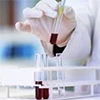 Biochemistry
Biochemistry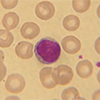 Haematology and Transfusion
Haematology and Transfusion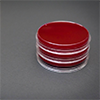 Clinical Microbiology (Including Virology)
Clinical Microbiology (Including Virology)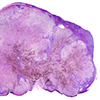 Cellular Pathology
Cellular Pathology General Information
General Information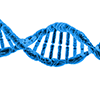 Molecular Pathology
Molecular Pathology